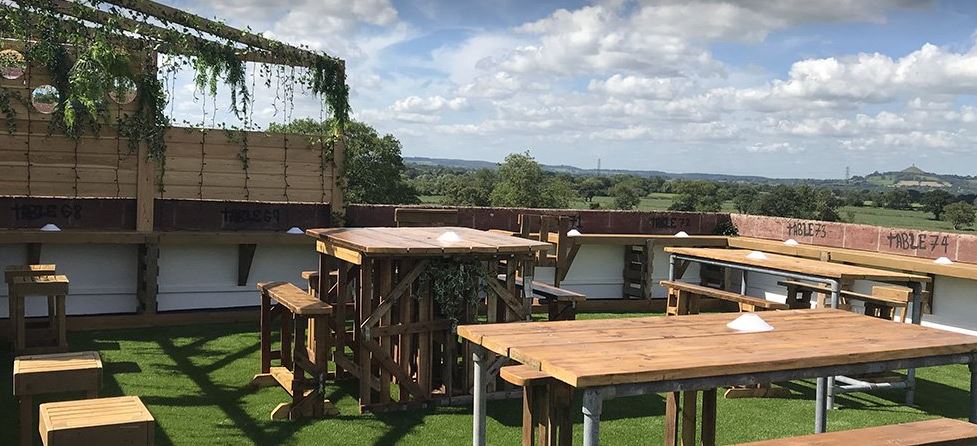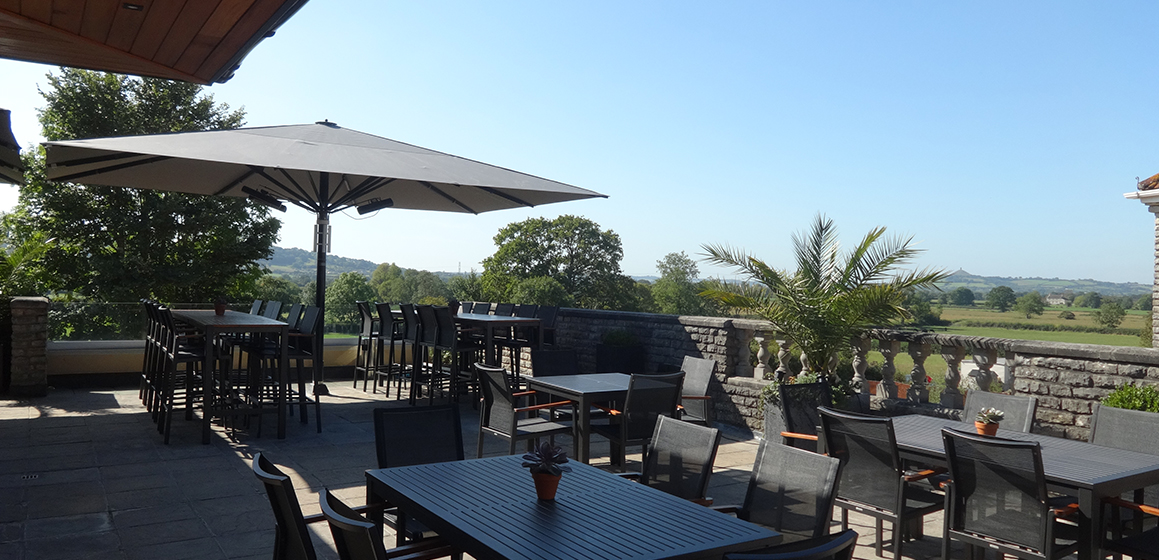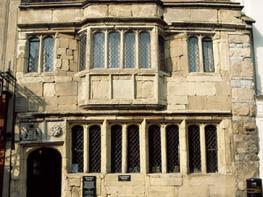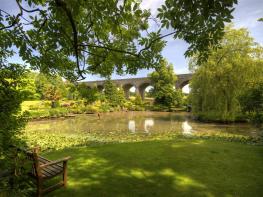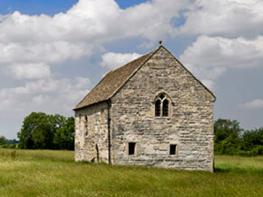The Swan combines the beauty of a historic building with all the advantages of a modern hotel. A…
Wells and Pen Hill

7.75 miles (12.5kms)
About the walk
Wells might be England's smallest city, after London that is, but the cathedral is as great as any in the country. It dominates the city's medieval heart, where ancient gateways, a wealth of carving and mullioned windows appear at almost every corner. Particularly impressive is the stone-paved Vicars' Close, immediately north of the cathedral, which is lined with 14th-century terraced cottages sporting tall chimneys and fronted by neat gardens. They originally housed the Vicars Choral who sang the eight daily services and are a unique and remarkable survival. Elsewhere are elegant houses and buildings erected into the 18th century, some forming part of the extended campus of the Wells Cathedral School, which claims to be one of the oldest extant schools in the world.
Upwelling waters
The city takes its name from springs that rise within the area of the Bishop's Palace. Attracted by the upwelling waters, the Romans established a settlement that developed during the Saxon period when Ine, the 7th-century king of Wessex founded a minster, dedicated, like the nearby wells, to St Andrew. It was elevated to a cathedral in AD 909 and, except for a brief period, when Bishop John of Tours decamped to Bath Abbey, was the centre of a diocese that incorporated all of Somerset.
A new cathedral
Around 1175, work began on a new cathedral, the design abandoning the heavy, rounded arches and dark spaces of the Norman for the graceful vaulting, tall windows, pointed arches and heaven-reaching lines of Early English Gothic. Building continued into the 14th century, reusing stone from the now abandoned church. Among the spectacular highlights of the new St Andrew's are the magnificent west front, chapter house, lady chapel, a 14th-century astronomical clock and of course, the serene peacefulness of the cloisters. The nearby Bishop's Palace, dates from the early 13th century and once included a deer park. The precinct was later surrounded by crenallated walls and moat, the then bishop's insecurity stemming from a fall-out with the townsfolk over taxes.
Walk directions
Leave the car park by the traffic lights and follow a footpath right, keeping ahead into Lovers Walk. At a left bend, go right and left onto New Street. Turn right, pass a mini-roundabout then branch left into Sadler Street. Leave beneath an arch opposite the White Hart into Cathedral Green. Swing right in front of the cathedral to emerge in Market Place. Go left and then left again through another archway to the Bishop's Palace. Bear right and follow two sides of the moat to the B3139.
Cross to a track diagonally opposite, leaving right after 50yds (46m) up a steep wooded path onto Tor Hill. Emerging onto a grassy summit, walk ahead into more trees. Bear left at a prominent fork into a long field. Walk beside the left edge to find a stile towards its far end. Drop steeply through the woods and beside a couple of meadows to a cycle track. Follow it right, eventually emerging onto the B3139.
Cross to a field gate diagonally opposite and go right through another gate. A path leads left into Biddle Combe. Keep left at a fork, later crossing the stream as the valley narrows. Higher up, the path crosses back, but then occasionally shares the shallow streambed. Ignoring a bridge, carry on, keeping left within the main valley. After crossing the stream a final time, walk up past a brick building then bear right to a gate at the edge of the wood. Go left and climb at the field edge to exit opposite Barrow Cottage onto the A39.
Cross a stile beside the pull-in opposite and head half-right to the boundary wall. Follow it left, contouring Pen Hill below the transmitter mast. Continue through a gate past a cable stay, making for a bridle gate just left of the next corner (not the stile in the corner). Carry on beside two more fields to reach a lane.
Go left then first right along a bridletrack. Bear left at a fork and continue past a cottage to a bend. Cross a stile into the left field and strike diagonally away, skirting hawthorns to a gate. Carry on straight across two more fields to a gate/stile, but, instead of crossing, turn back left, dropping to a gate halfway along the bottom hedge. Head downhill on a developing track, passing through a couple of gates. Beyond the second, bear off left to find a gate/stile near the bottom-left field corner. Continue downhill by the hedge to a narrow lane.
Go left and first right along a farm track. As it bends left, keep ahead to a gate and walk across an orchard and subsequent field to a gate in the top wall. Bear left behind Model Farm and on across the field to a gate near the far-left corner. Walk out to a junction of tracks.
Bear right towards Wells. Shortly beyond a gate, as the track curves left, leave ahead on a rough track. As that then bends right, go forward on a contained path, later crossing a street, then a road and eventually passing through a gate into The Blue School. Walk on past buildings and across playing fields to a bridge over the main road. Turn right back to the car park.
Additional information
Some rough field and woodland paths, often muddy in Biddle Combe, steep descents and street walking through the city of Wells
Extensive views from the open tops reached along a climb through a deep, wooded gorge
On leads through city and near grazing livestock
AA Walker's Map 25 Bristol, Bath & The Mendips
Whiting Way pay and display car park off A39 Portway in city centre
Beside Town Hall off Market Place
WALKING IN SAFETY
Read our tips to look after yourself and the environment when following this walk.
Find out more
Also in the area
About the area
Discover Somerset
Somerset means ‘summer pastures’ – appropriate given that so much of this county remains rural and unspoiled. Ever popular areas to visit are the limestone and red sandstone Mendip Hills rising to over 1,000 feet, and by complete contrast, to the south and southwest, the flat landscape of the Somerset Levels. Descend to the Somerset Levels, an evocative lowland landscape that was the setting for the Battle of Sedgemoor in 1685. In the depths of winter this is a desolate place and famously prone to extensive flooding. There is also a palpable sense of the distant past among these fields and scattered communities. It is claimed that Alfred the Great retreated here after his defeat by the Danes.
Away from the flat country are the Quantocks, once the haunt of poets Samuel Taylor Coleridge and William Wordsworth. The Quantocks are noted for their gentle slopes, heather-covered moorland expanses and red deer. From the summit, the Bristol Channel is visible where it meets the Severn Estuary. So much of this hilly landscape has a timeless quality about it and large areas have hardly changed since Coleridge and Wordsworth’s day.
Nearby stays
Restaurants and Pubs
Nearby experiences
Recommended things to do
Why choose Rated Trips?
Your trusted guide to rated places across the UK
The best coverage
Discover more than 15,000 professionally rated places to stay, eat and visit from across the UK and Ireland.
Quality assured
Choose a place to stay safe in the knowledge that it has been expertly assessed by trained assessors.
Plan your next trip
Search by location or the type of place you're visiting to find your next ideal holiday experience.
Travel inspiration
Read our articles, city guides and recommended things to do for inspiration. We're here to help you explore the UK.






